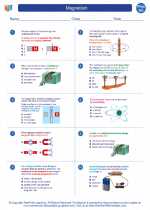Shear in Physics
Shear is a type of deformation that occurs when a force is applied parallel to the surface of an object, causing different parts of the object to move in opposite directions. This type of deformation is commonly observed in materials like metal, wood, and even fluids.
Understanding Shear Stress and Shear Strain
When a shear force is applied to an object, it creates a shear stress, which is the force per unit area that acts parallel to the surface. The shear stress is given by the formula:
Shear Stress (τ) = F / A
Where F is the applied force and A is the cross-sectional area of the object.
As a result of the shear stress, the object undergoes shear strain, which is a measure of the deformation or displacement of the object's internal layers relative to each other. Shear strain is given by the formula:
Shear Strain (γ) = tan(θ)
Where θ is the angle of deformation caused by the shear stress.
Shear Modulus
The shear modulus (G) is a measure of the rigidity of a material and its ability to resist shear deformation. It is defined as the ratio of shear stress to shear strain and is given by the formula:
Shear Modulus (G) = Shear Stress / Shear Strain
Practical Applications of Shear
Shear deformation is important in various engineering and physics applications, including the design of structural materials, the behavior of fluids, and the study of seismic waves in the Earth's crust.
Study Guide
When studying shear in physics, consider the following key points:
- Understand the concept of shear stress and shear strain, and how they relate to the deformation of materials.
- Learn how to calculate shear stress, shear strain, and shear modulus using the relevant formulas.
- Explore real-world examples of shear deformation in different materials and systems.
- Practice solving problems involving shear stress, shear strain, and shear modulus to reinforce your understanding.
- Consider the practical implications of shear in engineering, geology, and other fields.
By mastering the concept of shear and its applications, you'll gain a deeper understanding of material behavior and the fundamental principles of deformation in physics.



